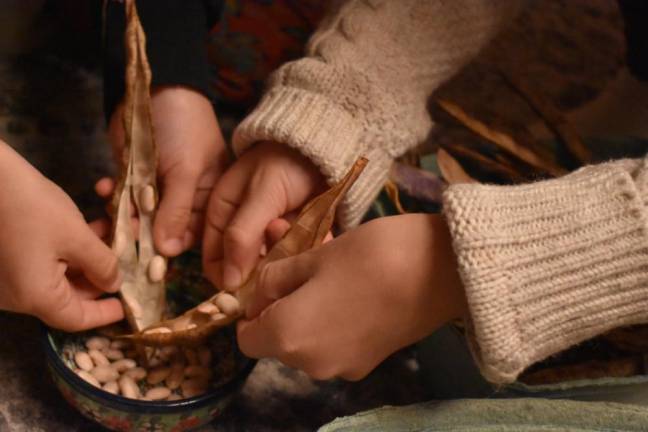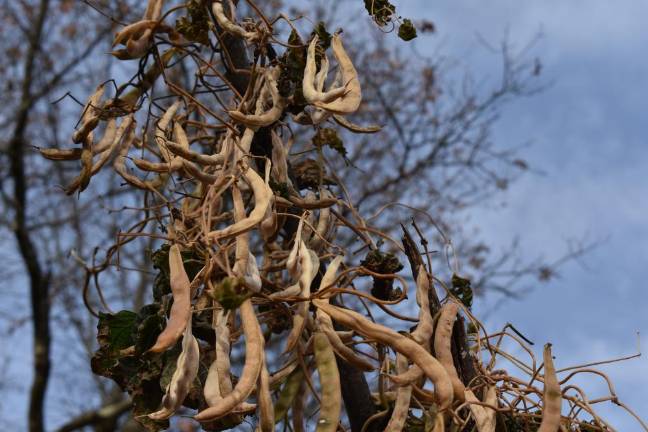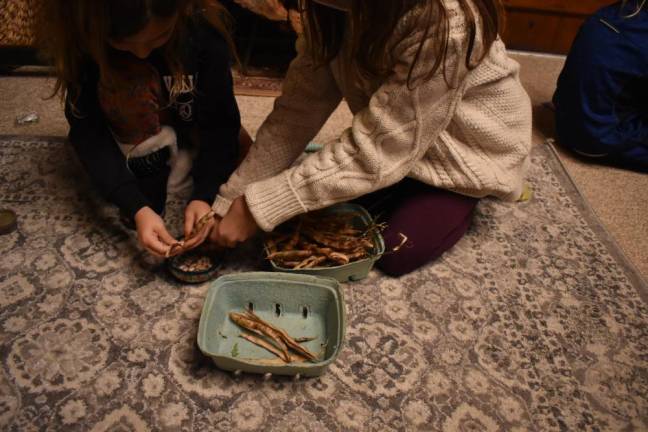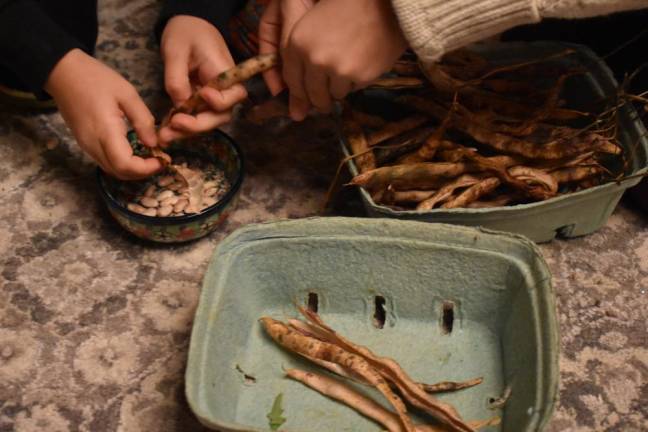The Tao of dry beans




Green, purple, wax, bush, pole, edamame. Who knows why, but this was the year of the bean.
Vines clambered up the eight-foot tipi and kept going, shouldering out the cucumbers to dangle their pods tantalizingly off the top, just out of reach of jumping fingers. Husband Joe hauled out a stepladder at least twice to harvest, a sight never before seen in our garden.
Just when we’d gotten into a daily rhythm with the green beans (picking, eating, picking, eating), I looked around and saw that while we were busy in garden three, a slow-moving purple tsunami had scaled the fence of garden one. I watched, first with pride and then with growing apprehension, as the bean vines gradually but inexorably pulled the fence halfway down to the ground, so that a deer with any motivation could now have high-stepped into the garden. The force of the leguminous tidal wave created a ledge atop the fence-line, upon which a snake made itself at home, as I discovered when I reached into the leafy jungle to pick a bean and nearly seized a coiled tail instead.
We ate beans raw, blanched, dehydrated, sautéed in butter and garlic. We canned and pickled them. We set up an impromptu farm stand and the kids, briefly motivated by the prospect of cold hard cash, picked and packed beans into old takeout containers, selling them to our very sporting neighbor and their weekend guests. We were actually making progress – and some money! – when my crew just as suddenly announced that they were done. American kids, I huffed, as if I were familiar with many other varieties, and got my basket out again.
I gave beans to co-workers. We invited visitors in no uncertain terms to grab a vessel and pick their own. We invented a dance move called the bean-picker.
But the more we picked, I swear, the faster the beans came. The vines began to assume intimidating proportions in my mind, evoking a mélange of mythical monstrosities: the eponymous supporting hero from Jack and the Beanstalk, the many-headed hydra to my Hercules.
Maybe it was that I went away two consecutive weekends. Or maybe the legumes had sunk their taproots into some primordial energetic font that was not to be matched by mere mortals. All I know is that one morning, I approached the garden and understood: the beans had finally, irrevocably gained the upper hand.
Juno, 7, clarified this for me, explaining that once the bean-bumps had gotten clearly defined, I should not bother to pack them as her snack. Fine. I would eat them myself. I would chew as long as I had to, dammit. I had not done all this work to quit now!
That lasted until I found myself fishing yet another long, fibrous bean string out of my throat that was making me gag. They were officially too tough, even for moi. Alas, there was nothing left to do but leave the big ones to grow fat and dry out (ignore here the instinct to draw a parallel to the human condition), to harvest in the far-off fall as storage beans.
Flash forward to November. We’ve had our killing frost. It’s time. Time to turn my attention to the few hardy survivors.
Going out to the garden now is a mellower affair. I gather some greens (kale, arugula, fennel tops, celery leaves), root veggies (beets, carrots, still can’t figure out what the hell to do with the turnips) and a bunch of dried beans. I choose only the pods that are papery crisp, whose beans rattle inside: the ones dry enough to spend the winter in a jar without molding.
I harvest the beans in small batches, because my shellers are small people (whom I do not pay) with small (American) attention spans, and they will get bored of the whole thing, probably forever, if I bring in too many at once. The trick is to keep it light, to counterbalance the heavy lifts with little batches that leave ’em wanting more. Turns out, coaxing those slippery, shiny, pill-looking capsules out of their crackly brown, dead-looking pods can actually be a uniquely pleasing tactile experience in small enough doses. We’ve seen skirmishes break out over the last bean, believe it or not. When I bring in just enough, the kids will sit there, happy as clams, shelling on autopilot while listening to a Harry Potter audiobook, like humans have been doing (minus audiobook) for 8,000 years.
And so we’ve got about three quarts of dry beans put by for the winter – a first on our life-list of homestead accomplishments. Yet it’s a surprisingly modest yield, given all the work and all those beans. That’s the deal when you preserve food – it shrinks. Already we’ve had some in a stir-fry. They tasted... like beans! Tacos, stews; I’m envisioning a chili to bring to our friend’s Super Bowl party.
Soon I’ll put the full jars down in the basement. But for now, I like to look at them, let the kids contemplate the fruit of our labors: a worldwide staple of the human diet, but oh so humble. With beans, there is zero glamour. You can’t gift a jar of beans like you could pesto or pickles. At the grocery store, this many dry beans would cost, what, a couple bucks?
And yet this most basic of pantry staples is wondrous to behold. I haul the microscope up from the basement so we can do it properly. Each bean is jam-packed with raw life-making potential, ribbed with veins, endowed with a scar called a hilum. Out of this passageway – which under magnification looks like nothing so much as the entrance to a birth canal – will come next year’s taproot, feeding the bean being who, garden gods willing, will once more don her leafy gown and snake amulet as she rises up to her 10-foot glory.